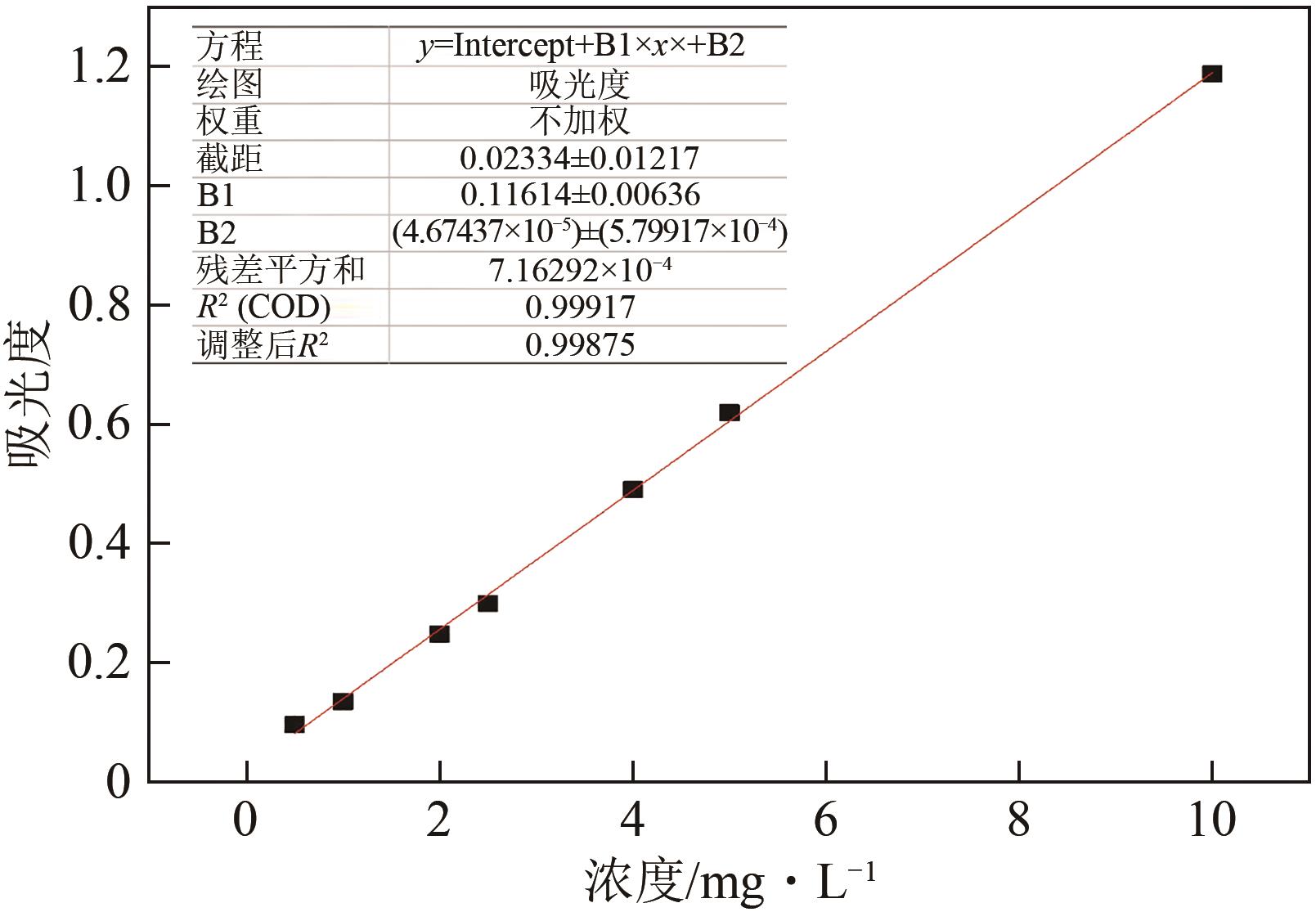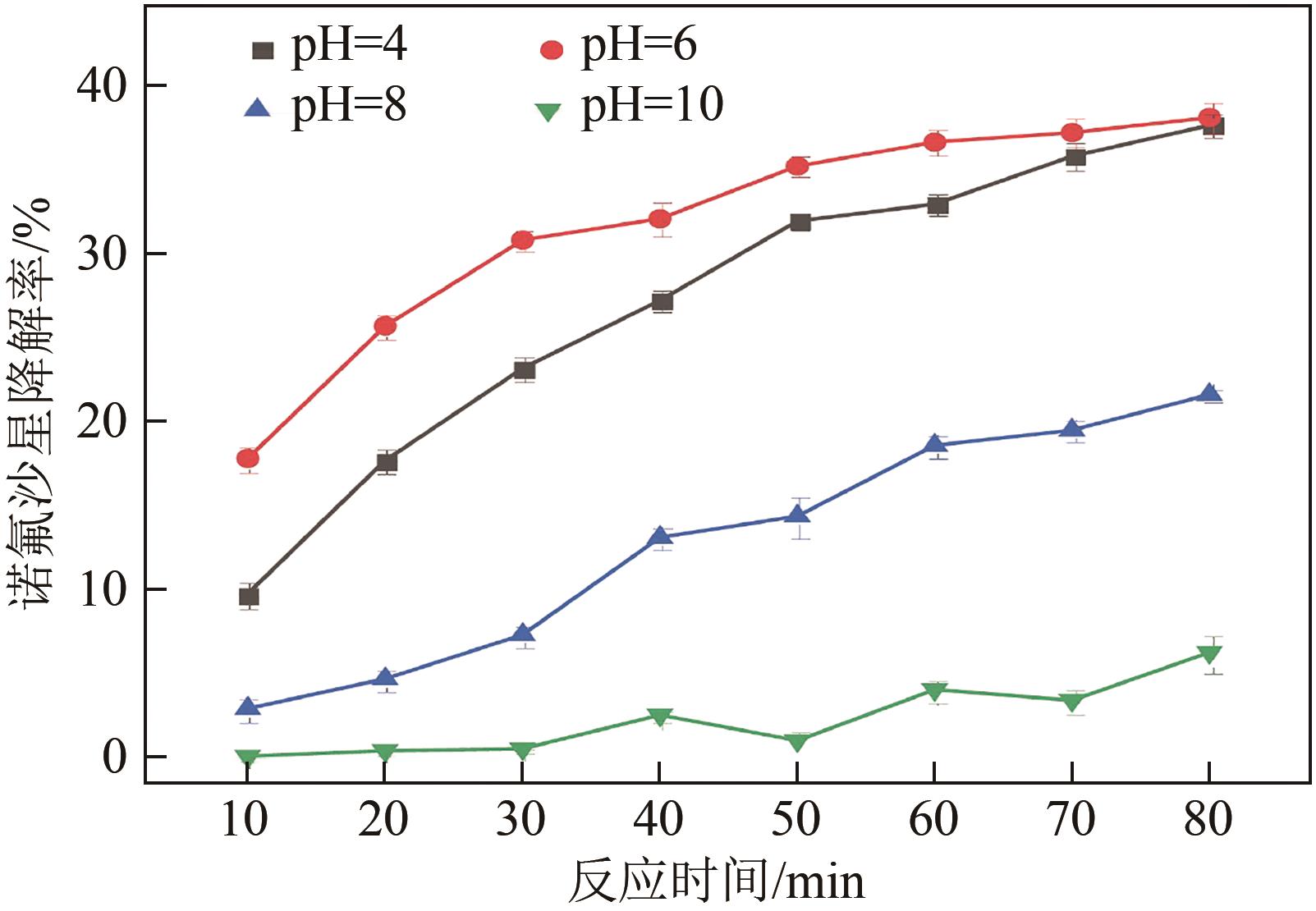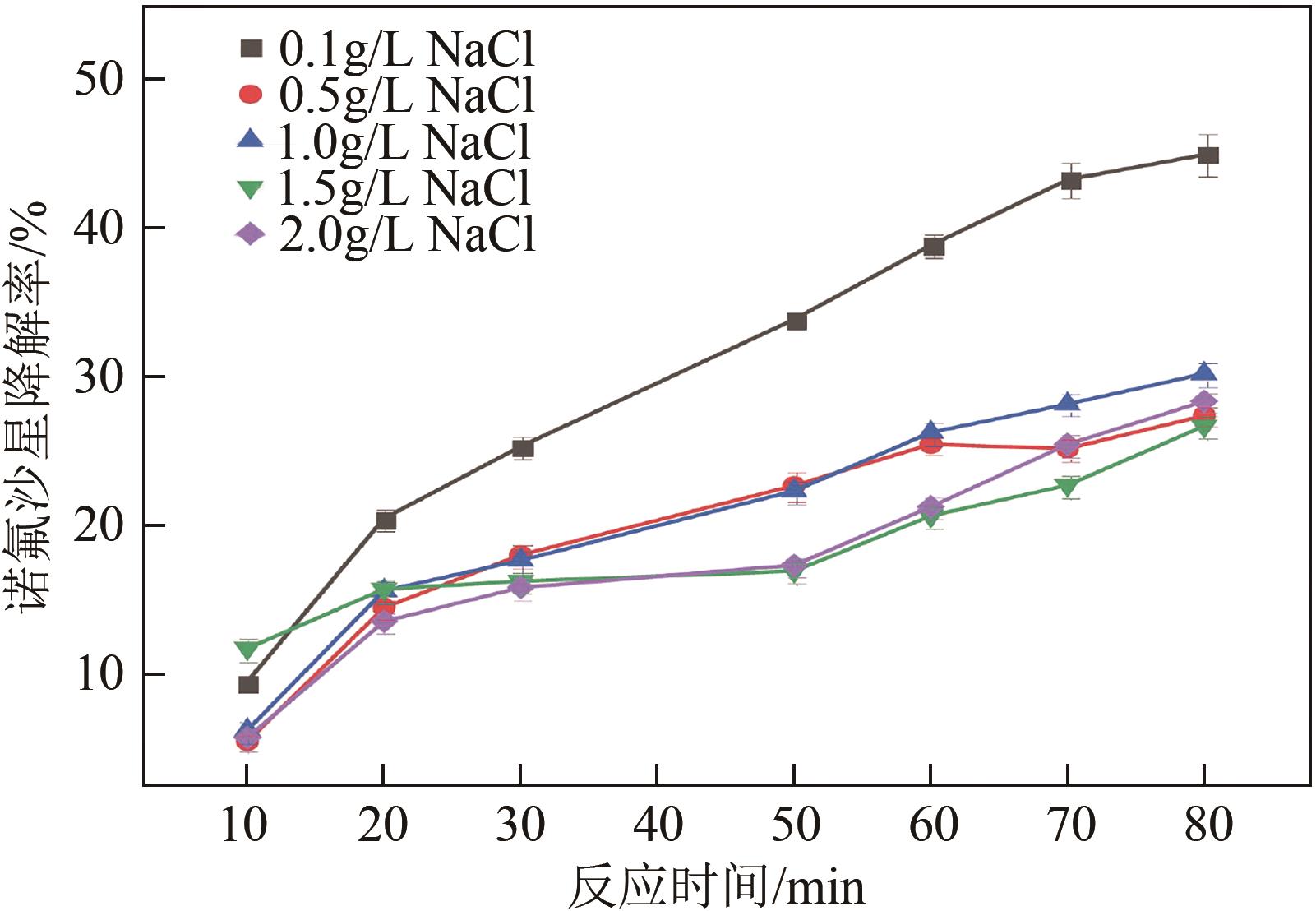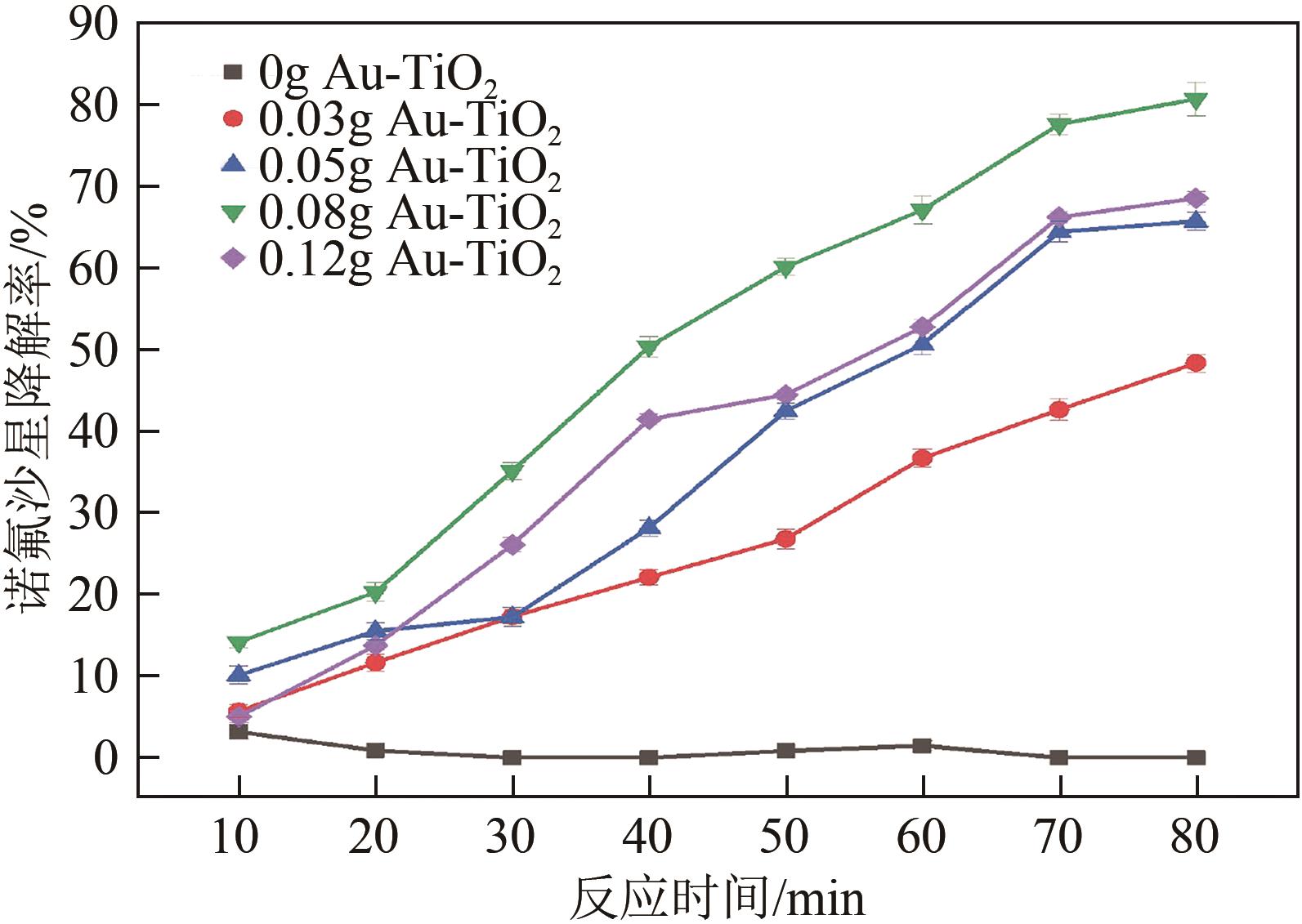| 1 |
QIAO Min, YING Guangguo, SINGER Andrew C, et al. Review of antibiotic resistance in China and its environment[J]. Environment International, 2018, 110: 160-172.
|
| 2 |
LIU Xiaohui, LU Shaoyong, GUO Wei, et al. Antibiotics in the aquatic environments: A review of lakes, China[J]. Science of the Total Environment, 2018, 627: 1195-1208.
|
| 3 |
LEI Xiaoning, LU Jianjiang, LIU Zilong, et al. Concentration and distribution of antibiotics in water-sediment system of Bosten Lake, Xinjiang[J]. Environmental Science and Pollution Research, 2015, 22(3): 1670-1678.
|
| 4 |
杨媛. 新疆巴州地区水环境中多种抗生素的浓度水平与分布特征[D]. 石河子: 石河子大学, 2018.
|
|
YANG Yuan. Concentration levels and distribution characteristics of various antibiotics in Kaidu river and Kongque river in Bazhou area, Xinjiang[D]. Shihezi: Shihezi University, 2018.
|
| 5 |
MA Enhui, WANG Ke, HU Zhenqi, et al. Dual-stimuli-responsive CuS-based micromotors for efficient photo-Fenton degradation of antibiotics[J]. Journal of Colloid and Interface Science, 2021, 603: 685-694.
|
| 6 |
RICHARDSON Bruce J, LAM Paul K S, MARTIN Michael. Emerging chemicals of concern: Pharmaceuticals and personal care products (PPCPs) in Asia, with particular reference to Southern China[J]. Marine Pollution Bulletin, 2005, 50(9): 913-920.
|
| 7 |
ZHANG Qianqian, YING Guangguo, PAN Changgui, et al. Comprehensive evaluation of antibiotics emission and fate in the river basins of China: Source analysis, multimedia modeling, and linkage to bacterial resistance[J]. Environmental Science & Technology, 2015, 49(11): 6772-6782.
|
| 8 |
BU Qingwei, WANG Bin, HUANG Jun, et al. Pharmaceuticals and personal care products in the aquatic environment in China: A review[J]. Journal of Hazardous Materials, 2013, 262: 189-211.
|
| 9 |
BRAUSCH John M, RAND Gary M. A review of personal care products in the aquatic environment: Environmental concentrations and toxicity[J]. Chemosphere, 2011, 82(11): 1518-1532.
|
| 10 |
LIN Tao, YU Shilin, CHEN Wei. Occurrence, removal and risk assessment of pharmaceutical and personal care products (PPCPs) in an advanced drinking water treatment plant (ADWTP) around Taihu Lake in China[J]. Chemosphere, 2016, 152: 1-9.
|
| 11 |
SMITH David L, HARRIS Anthony D, JOHNSON Judith A, et al. Animal antibiotic use has an early but important impact on the emergence of antibiotic resistance in human commensal bacteria[J]. PNAS, 2002, 99(9): 6434-6439.
|
| 12 |
COWIESON A J, KLUENTER A M. Contribution of exogenous enzymes to potentiate the removal of antibiotic growth promoters in poultry production[J]. Animal Feed Science and Technology, 2019, 250: 81-92.
|
| 13 |
BOXALL A B A. The environmental side effects of medication[J]. EMBO Reports, 2004, 5(12): 1110-1116.
|
| 14 |
Sören THIELE-BRUHN. Pharmaceutical antibiotic compounds in soils—A review[J]. Journal of Plant Nutrition and Soil Science, 2003, 166(2): 145-167.
|
| 15 |
TONG Changlun, ZHUO Xiajun, GUO Yun. Occurrence and risk assessment of four typical fluoroquinolone antibiotics in raw and treated sewage and in receiving waters in Hangzhou, China[J]. Journal of Agricultural and Food Chemistry, 2011, 59(13): 7303-7309.
|
| 16 |
Ana MARAVIĆ, Mirjana SKOČIBUŠIĆ, Matilda ŠPRUNG, et al. Occurrence and antibiotic susceptibility profiles of Burkholderia cepacia complex in coastal marine environment[J]. International Journal of Environmental Health Research, 2012, 22(6): 531-542.
|
| 17 |
HARNISZ Monika, KORZENIEWSKA Ewa, Iwona GOŁAŚ. The impact of a freshwater fish farm on the community of tetracycline-resistant bacteria and the structure of tetracycline resistance genes in river water[J]. Chemosphere, 2015, 128: 134-141.
|
| 18 |
王倩倩, 鲁建江, 刘江, 等. 超高效液相色谱-串联质谱同步检测艾比湖中14种抗生素[J]. 环境工程, 2016, 34(12): 153-157.
|
|
WANG Qianqian, LU Jianjiang, LIU Jiang, et al. Determination of fourteen antibiotics in water of aibi lake by UPLC-MS/MS[J]. Environmental Engineering, 2016, 34(12): 153-157.
|
| 19 |
OKAIKUEWOODI Fanny E K, KELCH Sabrina E, SCHMIDT Michael P, et al. Structures and mechanisms in clay nanopore trapping of structurally-different fluoroquinolone antimicrobials[J]. Journal of Colloid and Interface Science, 2018, 513: 367-378.
|
| 20 |
GE Linke, HALSALL Crispin, CHEN Changer, et al. Exploring the aquatic photodegradation of two ionisable fluoroquinolone antibiotics-Gatifloxacin and balofloxacin: Degradation kinetics, photobyproducts and risk to the aquatic environment[J]. Science of the Total Environment, 2018, 633: 1192-1197.
|
| 21 |
赵玲玲, 蔡照胜. 混凝-Fenton氧化预处理抗生素废水的研究[J]. 环境科学与技术, 2010, 33(11): 138-141.
|
|
ZHAO Lingling, CAI Zhaosheng. Pretreatment of antibiotic wastewater by coagulation-Fenton oxidation[J]. Environmental Science & Technology, 2010, 33(11): 138-141.
|
| 22 |
潘志彦, 陈朝霞, 王泉源, 等. 制药业水污染防治技术研究进展[J]. 水处理技术, 2004, 30(2): 67-71.
|
|
PAN Zhiyan, CHEN Zhaoxia, WANG Quanyuan, et al. Progress in study of pharmaceutical wastewater treatment[J]. Technology of Water Treatment, 2004, 30(2): 67-71.
|
| 23 |
DANGI Arun Kumar, SHARMA Babita, HILL Russell T, et al. Bioremediation through microbes: Systems biology and metabolic engineering approach[J]. Critical Reviews in Biotechnology, 2019, 39(1): 79-98.
|
| 24 |
GUO Ruonan, CHEN Ying, NENGZI Lichao, et al. In situ preparation of carbon-based Cu-Fe oxide nanoparticles from CuFe Prussian blue analogues for the photo-assisted heterogeneous peroxymonosulfate activation process to remove lomefloxacin[J]. Chemical Engineering Journal, 2020, 398: 125556.
|
| 25 |
HUANG Shushu, WANG Guodong, LIU Jiaqi, et al. A novel CuBi2O4/BiOBr direct Z-scheme photocatalyst for efficient antibiotics removal: Synergy of adsorption and photocatalysis on degradation kinetics and mechanism insight[J]. ChemCatChem, 2020, 12(17): 4431-4445.
|
| 26 |
李红, 胥学鹏, 王英臣. 二氧化钛纳米微粒的制备及对染料甲基紫的降解[J]. 环境保护科学, 2008, 34(4): 28-30.
|
|
LI Hong, XU Xuepeng, WANG Yingchen. Preparation of TiO2 nano particles and the photocatalytic degradation on methyl violet[J]. Environmental Protection Science, 2008, 34(4): 28-30.
|
| 27 |
KIM Soonhyun, CHOI Wonyong. Visible-light-induced photocatalytic degradation of 4-chlorophenol and phenolic compounds in aqueous suspension of pure titania: Demonstrating the existence of a surface-complex-mediated path[J]. Journal of Physical Chemistry B, 2005, 109(11): 5143-5149.
|
| 28 |
BUDAI Marianna, GROF Pal, ZIMMER Andreas, et al. UV light induced photodegradation of liposome encapsulated fluoroquinolones: An MS study[J]. Journal of Photochemistry and Photobiology A: Chemistry, 2008, 198(2/3): 268-273.
|
| 29 |
ZHU Menglei, WANG Yuanyuan, DENG Yanhui, et al. Strategic modulation of energy transfer in Au-TiO2-Pt nanodumbbells: Plasmon-enhanced hydrogen evolution reaction[J]. Nanoscale, 2020, 12(13): 7035-7044.
|
| 30 |
Nabin Kumar PAL, KRYSCHI Carola. Improved photocatalytic activity of gold decorated differently doped TiO2 nanoparticles: A comparative study[J]. Chemosphere, 2016, 144: 1655-1664.
|
| 31 |
Jia DUO, LI Wenfeng, WANG Yingji, et al. Photothermal catalytic degradation of lomefloxacin with nano Au/TiO2 [J]. Water, 2022, 14(3): 339.
|
| 32 |
GE Linke, NA Guangshui, ZHANG Siyu, et al. New insights into the aquatic photochemistry of fluoroquinolone antibiotics: Direct photodegradation, hydroxyl-radical oxidation, and antibacterial activity changes[J]. Science of the Total Environment, 2015, 527/528: 12-17.
|
| 33 |
ZHANG Ruochun, YANG Yongkui, HUANG Ching-Hua, et al. Kinetics and modeling of sulfonamide antibiotic degradation in wastewater and human urine by UV/H2O2 and UV/PDS[J]. Water Research, 2016, 103: 283-292.
|
| 34 |
刘钰, 杨曦, 高颖. 扑热息痛在硝酸根溶液中的光解研究[J]. 环境科学, 2007, 28(6): 1274-1279.
|
|
LIU Yu, YANG Xi, GAO Ying. Photodegradation of paracetamol in nitrate solution[J]. Environmental Science, 2007, 28(6): 1274-1279.
|
| 35 |
LAM Monica W, YOUNG Cora J, MABURY Scott A. Aqueous photochemical reaction kinetics and transformations of fluoxetine[J]. Environmental Science & Technology, 2005, 39(2): 513-522.
|
| 36 |
BOREEN Anne L, ARNOLD William A, MCNEILL Kristopher. Photochemical fate of sulfa drugs in the aquatic environment: Sulfa drugs containing five-membered heterocyclic groups[J]. Environmental Science & Technology, 2004, 38(14): 3933-3940.
|
| 37 |
张志超. 典型兽药在水体中光降解研究——以氟喹诺酮和苯胂酸类化合物为例[D]. 广州: 中国科学院大学(中国科学院广州地球化学研究所), 2018.
|
|
ZHANG Zhichao. Photodegradation of typical veterinary drug in water—Taking fluoroquinolones and benzoic acid compounds as examples[D]. Guangzhou: Guangzhou Institute of Geochemistry, Chinese Academy of Sciences, 2018.
|
| 38 |
褚明杰, 岳永德, 花日茂, 等. 几种物质对苯噻草胺在水中光降解的影响[J]. 应用生态学报, 2006, 17(1): 155-158.
|
|
CHU Mingjie, YUE Yongde, HUA Rimao, et al. Effects of dissolved compounds on photodegradation of mefenacet in water[J]. Chinese Journal of Applied Ecology, 2006, 17(1): 155-158.
|
| 39 |
葛林科, 陈景文, 张思玉, 等. 水中氟喹诺酮类抗生素加替沙星的光降解[J]. 科学通报, 2010, 55(11): 996-1001.
|
|
GE Linke, CHEN Jingwen, ZHANG Siyu, et al. Photodegradation of gatifloxacin, a fluoroquinolone antibiotic in water[J]. Chinese Science Bulletin, 2010, 55(11): 996-1001.
|
| 40 |
PARRA S, OLIVERO J, PULGARIN C. Relationships between physicochemical properties and photoreactivity of four biorecalcitrant phenylurea herbicides in aqueous TiO2 suspension[J]. Applied Catalysis B: Environmental, 2002, 36(1): 75-85.
|
| 41 |
CURCÓ D, GIMÉNEZ J, ADDARDAK A, et al. Effects of radiation absorption and catalyst concentration on the photocatalytic degradation of pollutants[J]. Catalysis Today, 2002, 76(2/3/4): 177-188.
|
 ), 姚国栋2, 王英霁3, 曾旭2, 金滨滨4(
), 姚国栋2, 王英霁3, 曾旭2, 金滨滨4( )
)
 ), YAO Guodong2, WANG Yingji3, ZENG Xu2, JIN Binbin4(
), YAO Guodong2, WANG Yingji3, ZENG Xu2, JIN Binbin4( )
)




